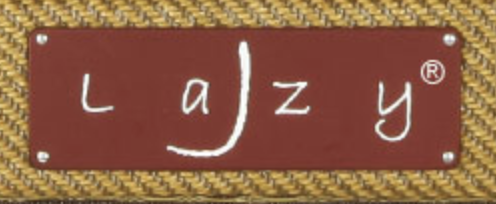
Lazy J Amps
Lazy J amplifiers is based in the UK and are the brainchild of Jesse Hoff, the founder, owner and builder of all Lazy J amplifiers.
From Jesse
It has been said that necessity is the mother of invention – nowhere is this more applicable than when it comes to guitar amplifiers. The great amps that defined (and continue to define) rock & roll were not conceived as marketable products at their inception – rather, they evolved to that point. Constant interaction with players in that new and rapidly developing field made sure that amplifiers were constantly tailored to suit specific needs…and out of this ongoing relationship came some of the most ground breaking ideas – ideas that prevail even today. And from the shoulders of these giants, we continue to look forward.
Lazy J Projects have spent the last 20 years working with musicians to help them get the best from their equipment. Attention to detail and a very personalised approach have always been a key part of our philosophy. With this in mind, we are now pleased to offer a range of hand built amplifiers and pedals, made to the same high standard that keeps those great Rock & Roll classics as valid today as they were decades ago.
CVG and Lazy J in Australia
Simon and Jesse Hoff, the owner builder of Lazy J amps, have been friends for a number of years and Simon is the proud owner of both a Lazy J20 and a Lazy J10.
Simon introduced John Spence, former owner of Premier Guitars Australia, to Jesse and Lazy J a number of years ago to at least offer an option for Aussie guitarist to get to hear and purchase these wonderful amps, and as a result we are seeing more of them being used on Australian stages.
True confession – Simon is an unashamed supporter and player of Lazy J amps and believes everyone else will be once they try one.
CVG has a Lazy J 20 and a Lazy J10 available to inspect or try. Please contact us to discuss.
From Jesse Hoff - Founder, owner and builder of all Lazy J Amps.
“Over the years I have built quite a few amps, one offs to order, and it never crossed my mind to start building amps for a living. The reason for that was that not too long ago building an amp by hand, because of the time involved, would inevitably price it in the same region as most vintage amps …. and being a vintage nut myself, I always thought that given the choice between a vintage or a boutique amp, most people would always go for the vintage/collectable. Well, that seems to have changed now as virtually all of the vintage equipment has moved into a league of its own as far as the price goes. On top of that, vintage amps have become a bit of a Catch 22 for most players. They’re really expensive, and they really need attention … which means replacing bad caps, resistors, transformers, etc … and ultimately reducing their collectable value. That now leaves hand built amps as a really viable option for a lot of players.”
The Lazy J20
The Lazy J J20 is based on a late ’50s classic that has helped define the voice of rock & roll. This amp is a 2 channel, hand build, point to point wired amp, which delivers ca. 18 watts into a 12”, 8 Ohm, Celestion Alnico Blue Speaker.
The cabinet is built from finger jointed pine and covered with hand aged, lacquered tweed. The 2 channels are marked Normal and Bright with a volume control for each one. The tone control affects both channels equally. Looking at the 4 inputs from the back of the amp, the 2 on the right are for the normal channel and the 2 on the left are for the bright channel. Both inputs labelled 1 are higher gain than the ones labelled 2.
The interesting thing is that both volume controls are interactive. The volume of the channel you’re not plugged into has an effect on the tone/tightness of the channel that you are plugged into. In other words, if your guitar is plugged into the bright channel, the normal channel volume affects the way the bright channel responds. This is subtle, but definitely audible. With the bright volume turned up to any given setting and the normal volume off, you hear the sound of the bright channel alone. By turning the normal channel up about halfway, you hear an increase in low mids. By turning the normal volume up to 10, the bottom end will tighten up; from 10 – 12 the sound will get choked, compressed and become quieter. This can be used to get interesting tonal variations from the amp.
The amp is set up with a GZ34 rectifier and a pair of 6L6s in the power amp and uses two 12AX7s. However, for a different feel and character, the amp will take a 5Y3 rectifier and a pair of 6V6s without the need of re-biasing. An optional feature that can be added to the amp in place of the ground switch is a variable attenuation Control (VAC), which allows the user to dial seamlessly from full output down to about 5 watts while retaining the amp’s character along the way.
Reverb Module:
As an option, a Lazy J Reverb Module can be added to the amp. It is a wonderful tube driven reverb circuit with a full size reverb tank which delivers in every way – from subtle “room” sized embellishment to out-there cavernous Dick Dale tones . The reverb circuitry includes a tone control and the module is housed in a small enclosure mounted on the inside of the cabinet, on the right hand side when looking at the amp from the back. The controls, reverb level and reverb tone, are easily accessible.
Tremolo:
There is also an optional tube driven tremolo module which adds yet another dimension to the amp. This is as good as tremolo gets – everything from the subtle pulsing of a Vibrolux or Deluxe Reverb to the monstrous throb of a brownface Super amp. The reverb & trem modules are supplied with a footswitch that controls level/speed and on/off for both.
Variable Attenuation Control:
This circuit allows the user to reduce the output of the amp in an even sweep from full power down to less than 5 watts. However, this is not a master volume. This circuit retains the amp’s tone and response while reducing its output volume. In other words, you turn your amp up to get the tone you want… which might make it too loud for certain situations. Now you can turn the amp down with the VAC to exactly the level you need while retaining all the character and response of your sound. This circuit is an optional feature on the Lazy J 20, however, it can be retro-fitted to most amps under 40 Watts.
Purchasing Options:
Pricing
A Lazy J are UK based, prices in Australia will vary from time to time due to fluctuations in exchange rates between UK pounds and AU dollars.
Once an order is placed with CVG, the price is locked in at that time and converted into AUD. Shipping from UK and import duties etc need to be calculated separately.
For example:
- A J20 1×12 with VAC, Tremolo & Reverb approximately £2500 (Feb 2023)
- Feb 2023 exchange rates £2500 to AUD$4,355
- Total Cost with customs, shipping and GST inclusive AUD$5,600
How to Purchase
Steps are as follows:
- You decide you would like to invest
- CVG will confirm a price.
- You pay a 25% deposit.
- CVG will arrange the introduction to Lazy J Amplification
- who will communicate with you direct through the build process, payment of balance & delivery.
Capital Vintage Guitars
Lazy J Demos
Here’s a list of some of the users of Lazy J products/services…
Richard Ashcroft
Jeff Beck
Sam Beer
Bleech
Joe Bonamassa
Marcus Bonfanti
Doyle Bramhall 2 (Eric Clapton, Sheryl Crow, Arc Angels, David Gilmour, etc.)
Dom Brown (Duran Duran)
Tom Bukovac
Dylan Burns (The Bodyrockers)
Bernard Butler
Mike Campbell (Tom Petty and the Heartbreakers)
Eric Clapton
Nalle Colt (Vintage Trouble)
Alan Darby (Eric Clapton, Bonnie Raitt, Queen, Van Morrison, etc…)
Gwyn Garfield Davies
Al Duncan
Lu Edmonds (Billy Bragg and the blokes, P.I.L., etc.)
Olivier Elen (Gentlemen of Verona)
Francois Fasano
Audley Freed
Noel Gallagher
David Gilmour
Dennis Greaves (Nine below zero)
Kenny Greenberg
Mark Griffiths (The Shadows)
Gary Hooker (Brad Paisley)
Neil Ivison (The Misers)
Jonas Jalhay (Rita Ora, Them is me, The Saturdays, I blame Coco, etc.)
Simon Johnson
Mark Karan (Bob Weir & RatDog)
Gary Kemp
Mark Knopfler
The Kooks
Robbie McIntosh
The Magic Numbers
Ray Majors
Scott McKeon
Molly’s Houseband (Johnny Barlow & Bill Newton)
Ed O’Brien
John Parricceli
Adam Phillips
P.I.L.
Luke Potashnick
Razorlight
Chris Rea
Joe Satriani
Paul Sayer
Matt Scannel (Vertical Horizon)
John Shanks
Ivor Sims (Saint Jude)
Dan Smith (The Noisettes)
Whit Smith (The Hotclub of Cowtown)
Jeremy Stacey
Paul Stacey
Dan Steinhardt
Harry Styles
The Temperance Movement
Pete Townshend
Keith Urban
Rafael Villafane (Royer Mics, Baby’O Music)
Joe Walsh
Ryan Wariner
Paul Weller
Matt White
Steve Winwood
